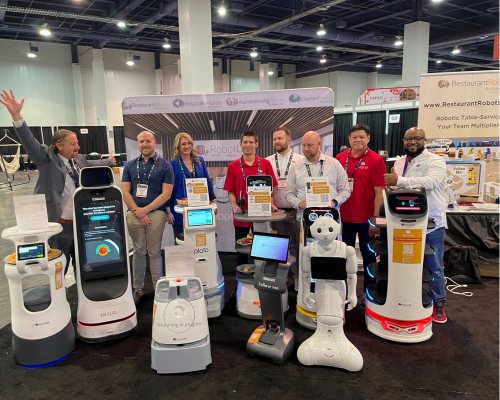
How robots are helping kids on the autism spectrum.
Children with special needs coming to the Santa Ana Public Library are meeting robots. Smiling, friendly and easily programmable, these are robots ready to help.
It might seem counterintuitive that a robot would help children on the autism spectrum find their way socially, or to build their academic skills and make them more ready for learning, but they offer something that even the most soft-spoken and well-meaning human teacher cannot: absolute predictability. And that means a lot. That’s why they are referred to as educational therapy robots.
“The reason it works is the robot is a human shape, which automatically we recognize as something familiar,” says Elad Inbar, founder and CEO of RobotLAB, a Bay Area-based robotics company. “But it’s also almost baby size. It’s two feet tall and not threatening. It has all the articulation of the human body. It can stand up, sit down, move forward, wave hello. But the size is friendly. It’s not ‘The Terminator’ with red eyes.”
The program is a partnership that began in December 2021 between the library and RobotLAB. The company that typically provides service robots for offices, restaurants and hotels also provides them for assisted-living facilities, where the robots can also remind residents to drink water and even entertain them.
The company has been partnering around the country to integrate educational therapy robots into schools and various programs, supplying the Santa Ana library with robots and custom-built Robot-Assisted Instruction programs and personalized social and emotional learning (SEL) curriculum to help kids on the spectrum improve attention span, communication skills and even self-regulation.
It’s cutting-edge stuff at a time when our interest in consumer technology is running up against rising anxiety about AI, but Inbar says these robots aren’t taking anyone’s job.
“The technology we have today, robots are used to basically augment the people, they don’t replace people,” Inbar says. “The robots themselves don’t teach anything. They are very monotonic actually. They are predictable. They’ll do the same thing over and over again without deviating and for kids on the spectrum, it’s very important because they are really intimidated by adults. We have different tone of voice. We have different speed that we speak. We have different body language and none of it is predictable. And it can be kind of like sensory overload.”
RobotLAB says studies have shown children on the spectrum engaged with robots about 75 percent more than just with a therapist. In one-on-one sessions, kids essentially use the robot as a medium between the therapist and them. The therapist and child each have a tablet and the robot is in the middle, facilitating the conversation. Inbar says, “The robot does the talking.”
“When they work with the robot about right and wrong, or animals or different types of lesson plans through the curriculum, the robot will run it exactly the same way, giving them the confidence they understand, and then the therapist will introduce one more variable, pushing one step further, and after seeing that 10 times, the child masters the subject. A therapist cannot be that precise.”
Inbar says his company is even partnering with Cal State Northridge, training psychology students how to use the robots. But it’s feedback from parents that might be telling.
“One mother said she could never communicate with her son, but managed to communicate through the robot because she can type in things to him and the robot plays that and her son can react and reply,” Inbar says. “Robots are not judgmental. Robots are not going to be frustrated. It’s great to see because it benefits humanity as a whole.”
By Shawn Price









Leave a Reply